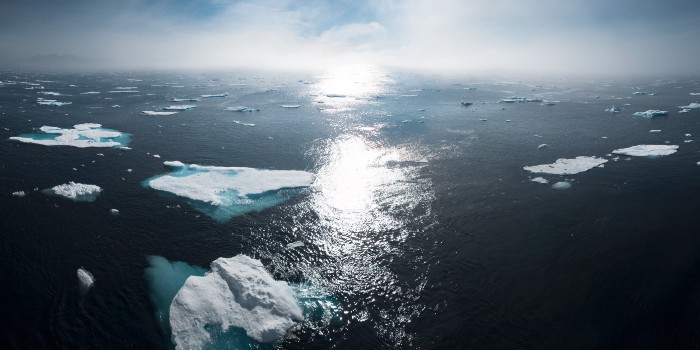Making TV ads is melting the Arctic ice. There I said it! An outrageous claim but bear with me.
We all have favourite TV ads, some old ones and some new. Undoubtedly these creative pieces of work need to be stored carefully, especially when they cost so much to produce.
Once the ad is finished, the rushes and masters are bundled together, and at higher resolution this can add up to around 10 terabytes (TBs) of data. This is then often stored in ‘the cloud’, or to be more specific, probably one of countless data centres in Virginia USA. These data centres chew through a lot of electricity to stay cool, and so create tons of CO2 in the process. Specifically, 10 TBs creates around 9000 kg of CO2 over 5 years. You probably knew storing data had an environmental cost, but did you know it created so much CO2?
Think about it, that’s 9000 kg of carbon for just storing the shoot data for one TV ad, for 5 years.
Recent research published in Science Magazine, has established a linear relationship between the meters squared of surface artic ice melted by one ton of CO2. The study goes into huge detail, and there are arguments around the nuances of measurement, but conservatively, one ton of CO2 melts approximately three-square meters of surface ice. We can therefore assume that one TV advert melts 270 square meters of ice.
Multiply that by the amount of TV adverts shot in this country alone, then stored, and you have literally hundreds of square miles of ice being melted year on year. Just from storing old shoot data!
It’s about convenience, most bad ecological choices seem to stem from this, and laziness. The less hassle the better; like swapping glass bottles for plastic.
In the early eighties the world started to turn its back on using glass bottles for fizzy drinks; bottles you’d collect, return and cash in at heady price of 2p/bottle to use the cash for sweets. Suddenly it was plastic, tin cans and no more sweet money. Who cared? It was much more convenient to use plastic, so no one ever questioned it. Now we know, the indiscriminate use of plastic has led to an almost irreversible pollution problem of our environment.
In the same way, people are indiscriminately using servers to store data without a thought. I’m not saying we abandon servers, obviously they are essential for almost everything we do, but do we need to use them to store OLD data? Our use of them cannot continue to be so blasé. Shouldn’t we save it for the essentials? Rather than blatantly putting everything up there without a thought to the environmental costs?
What’s the alternative? There’s long been other methods of data storage such as LTO tape. It’s the backbone of the service we provide here at Film Locker but if an agency or production company wanted to do it for themselves, we consult to help them make the transition. LTO is super low carbon, safe, stable, and easy to pull data back from.
With all the noise in the media this year around sustainability, no one is looking at the elephant in the room that’s creating so much carbon, the storage of our day to day creative process. Let’s start to make a real difference in sustainability in our industry and store our work in a more responsible way.
Author: Victoria Harvey for Film Locker
Contact us at www.filmlocker.com for more information.
This article forms a series of discussions in and around:
The best digital workflows for post production
How to store my digital rushes and masters
Film production and data storage
Digital archiving and backup
Low carbon data storage for media
Tape and historical archives
